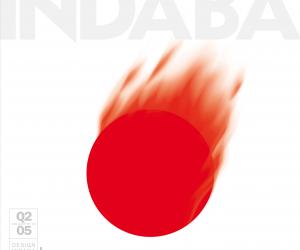First Published in
Who are your heros, if any?
People who are able to achieve a lot without compromising their vision. The late designer Tibor Kalman (of M&Co and Colors Magazine) was such a person.
When I studied and worked in Milan, I was lucky to meet and get to know great masters of the New Italian Design: Ettore Sottsass, Alessandro Mendini, Andrea Branzi. These people will always inspire my work and me.
What does the word/concept "clear" mean in your world?
Clarity of a concept, or of a vision, is a crucial requirement for any worthwhile idea. For me, clear is not about transparency but about cutting to the essence, to the simple, irreducible state. In this sense, clear also means beautiful.
What is your world?
It is, really, a world of ideas. Even though I have a happy family and quite a lot of friends, I like to be alone with my thoughts. I enjoy going to museums, or even traveling, alone. When I look at some Old Masters paintings, or read a really good book, it is like communicating with those people, those authors.
Are you influenced most by sight, touch, scent, sound?
We all are affected by all six senses, in equal measure. It so happened that the Western tradition emphasizes the sight, or the look of objects and things (and even of people). But if you suddenly lose one of the "other" senses, you immediately realize what is missing. The whole idea of dining, for instance, would lose any meaning.
When designing, if no client existed, do you think of yourself/your needs, or others?
When designers thinks of "others", they often project their own needs, experiences, and tastes on other people. I think, ultimately, it is always you. Because any design solution is subjective, personal, and individual. There is just no such thing as "objectively" better chair. And this is great! This is what makes our profession interesting and never-ending.
Do people play a huge role in your life/designs, or do you focus more on "things"?
When I studied at Domus Academy (almost twenty years ago!), one of the best things I learned was that objects, just like people, had their histories and lineages, and following their stories truly opened up my appreciation of the world. Today, I can talk for a half-an-hour about a common glass, or a fork. Most people are completely blind to these things, unfortunately. But when a designer is blind as well, then it's a problem.
Do you recall your dreams? If so, are they in color, do you hear words, do these dreams influence your work?
Yes, I recall them, although not as frequently as before. These dreams could be fantastic adventures, in color and vivid detail; often I travel through cities, buildings, and environments. But this otherworldly design usually stays there, on the other side. Somehow, it loses all meaning, when you try to drag it into our world.
Where would you most like to live?
Italy.
I do not know why, but it was like instant falling in love. Even now, when I go there, I immediately feel "at home".
Old Russian classical writers wrote about a mysterious correlation between a Russian soul and an Italian soul, and made a big deal out of it. They certainly had a point. Italian language (which I managed to learn easily) still strikes me as particularly beautiful.
What era would you most like to live in and why?
I often think that the end of the 19th - the beginning of the 20th Centuries was a great time to live. There was this belief in the future, in the progress, the desire to improve and to innovate. For these reasons, the art and culture were at their most incredible height. Of course, soon everyone's dreams got shattered with the World Wars, and other nightmares...
What does a vacation mean to you?
It usually means travel. Travel is just absolutely necessary to understand the world from different perspectives. My most fundamental experiences are the trips I took over the years to far-away lands, places like Thailand, Cambodia, Egypt, India. Many have asked, whether these trips affected my design, and how. The influence is obviously not direct. I would not start putting Egyptian motifs in my projects. What is important is to see and experience the different modes of the people's existence. Out of these comparisons, some interesting design ideas may emerge one day.
What is the first thing you do in the morning?
After the obvious activities, I go through the pages of the New York Times. It has become a kind of a (bad) habit, even though the news are now deeply depressing and rarely interesting.
Do you eat to eat or does eating truly satisfy you?
Food is one of the great experiences, and I remember certain meals which I had years ago. Of course, what is often remembered in not just the taste, but who was there, and what was said, and other intangibles - but inevitably, it is the meal that conditions and frames the entire memory.
What does a bed symbolize for you, rest, sex, comfort, constraint?
I have got a real bed relatively recently. Before that, there were futons, mattresses, and couches. It is amazing how our bed quickly became a place of more and more activities. We not only read there, and watch TV, and play board games with our son, but also now work on a powerbook. It is actually a very flexible universal piece of furniture. Once, we proposed a small hotel room which was entirely a huge bed. Some years later, I found that these bed-rooms already exist, and so do bed-restaurants, bars, and lounges.
















